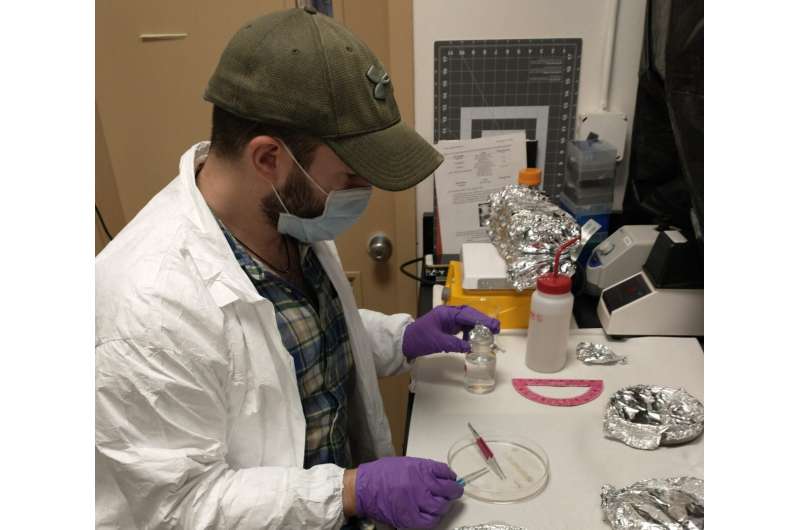Bio-based cellulose acetate plastic disintegrates in the ocean much faster than assumed

Cellulose diacetate (CDA), a bio-based plastic widely used in consumer goods, disintegrates, and degrades in the ocean far quicker than previously assumed, according to a new study published in Environmental Science & Technology Letters.
"These findings challenge the paradigm set by governmental agencies and advocacy groups that CDA-based materials persist in the ocean for decades," according to the paper, "Rapid Degradation of Cellulose Diacetate by Marine Microbes." "While no one plastic type will likely meet all of the diverse and growing needs of consumers, these initial findings on the fate of CDA-based materials in the ocean, combined with previous reports in terrestrial and wastewater systems, represent a positive step towards identifying high utility, bio-based plastics with low environmental persistence."
CDA is largely derived from wood pulp, making it a "bio-based" plastic. It is widely used in consumer goods, including cigarette filters, textiles, coatings, films, food packaging, and other products such as eye glass frames and tool handles.
For the study, researchers incubated nearly 350 CDA and control samples in a custom-built seawater mesocosm. They equipped the experimental system with a continuous flow of seawater from Vineyard Sound, Massachusetts. The seawater flowed over the samples and the researchers examined their degradation over time using an assortment of techniques. Time lapse photographs and mass loss measurements documented the disintegration of these materials, indicating that the CDA materials disintegrated in seawater on timescales of months.
The rapid disintegration of the CDA materials was marked with increasing esterase and cellulose enzymatic activity, suggesting that the native microbial community compositions "are evolving with a metabolic capacity to degrade the CDA materials," the paper states. The researchers confirmed this finding using specialized equipment at the National Ocean Sciences Accelerator Mass Spectrometry (NOSAMS) facility, where they determined that the chemical signatures of carbon dioxide respired by the native seawater microbes matched that of CDA.
"Our collective findings demonstrate that CDA-based materials disintegrate and biodegrade in the ocean orders of magnitude faster (months) than previously reported (decades)," according to the study.
Although scientists previously have found that CDA appears to be easily broken down by microbes in soil and wastewater environments, prior to this research no peer-reviewed, environmentally relevant study had assessed the persistence of CDA-based materials in marine environments.
"This is the first paper to try to put a number on how long CDA-based materials last in the ocean," said co-author Collin Ward, assistant scientist in the Marine Chemistry and Geochemistry Department at the Woods Hole Oceanographic Institution (WHOI). "We attacked this question from so many different angles using a wide range of tools, from pictures all the way up to multimillion-dollar mass spectrometers. Every single line of evidence converged to the same answer: These materials are breaking down on timescales of months. This challenges the perception that they persist for decades."
The paper notes that the timeline for CDA biodegradation is subject to variation depending on a number of factors not included in this study, such as different particle shapes and sizes, times of year, and location.
"It is very good news that some materials seem to not persist as long as we thought," Ward said. The collective goal of the research community should be to survey different types of plastics and try to identify those plastics "that are simultaneously useful, do not persist in the environment, and are comprised of sustainably sourced materials."
Ward and lead author Michael Mazzotta said they hope the findings encourage people, including legislators, to rely more on data-driven science when discussing the fate of plastics.
"Environmental persistence of organic contaminants is a key component of risk assessment and regulatory frameworks, with some arguing that high persistence alone is sufficient for establishing regulations. However, applying this persistence-based regulatory framework to plastics remains a challenge due to incomplete understanding of the fates of these materials, particularly in the ocean," the paper states.
Mazzotta, a postdoctoral investigator in WHOI's Marine Chemistry and Geochemistry Department, said that "while this research is a positive step in the right direction, this does not condone pollution. Just because cellulose diacetate degrades faster than what we expected, this is not a license to pollute."
The study was funded by Eastman Chemical Company and WHOI. The WHOI researchers said that it benefits society to have industry and academics work together to find solutions.
"It would be foolish to work in our own little silo and not interact with the manufacturers of the exact materials that we are trying to track in the environment," said Mazzotta. "They are the experts in producing these materials. We are the experts in understanding what happens to them in the environment. It's a synergistic relationship."
More information: Michael G. Mazzotta et al, Rapid Degradation of Cellulose Diacetate by Marine Microbes, Environmental Science & Technology Letters (2021). DOI: 10.1021/acs.estlett.1c00843
Journal information: Environmental Science & Technology Letters
Provided by Woods Hole Oceanographic Institution




















